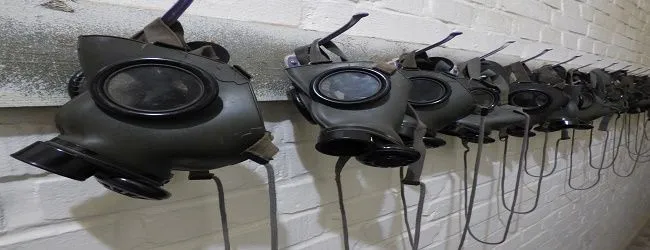You pay attention to safety by having smoke and carbon monoxide detectors in your house, but radon, another odorless, invisible gas, may not get as much attention as it deserves.
Since January is radon awareness month, now is a good time to learn about radon’s risks and how to protect yourself.
According to Carolyn Koke, director of market development for the AccuStar and RadonAway brands, radon is responsible for 21,000 lung cancer deaths each year--more than drunk driving, falls in the home, and carbon monoxide poisoning.
Here are five things to know about radon.
What it is?
Radon is a radioactive natural gas that comes from the natural breakdown of uranium in soil, rock, and water.Where it’s found
Radon is found throughout the country and as many as one in six homes can have high concentrations of radon gas.
It can seep into the air that you breathe in your house and it can enter through things like openings in the foundation and construction joints, gaps around pipes, and also through well water.
- Odorless, colorless
Since you can’t see or smell radon, the only way to know if your house is affected is through testing.
There are both short-and long-term radon tests that are inexpensive and accessible if you take a DIY route.
Or you could hire a professional to do a test.
Short-term tests run for several days and a longer-term test can measure radon levels over several months or a year.
Test kits:
• AccuStar
• Kansas State University National Radon Program Services
• National Radon Safety Board (Search for “Accredited Radon Laboratory”)
Dangerous levels
If a test shows that radon concentrations exceed 4 picocuries per liter of air (pCi/L), it’s a smart move to take steps to reduce radon levels, according to the Environmental Protection Agency.
- Reducing radon
If radon levels are high, you can reduce them. But it’s not a DIY job. Professionals –certified mitigation providers--may use several methods, including sealing cracks in floors and walls and installing underground pipes and an exhaust fan, to lower radon levels.
Find professionals:
• The National Radon Proficiency Program
• National Radon Safety Board
• Locate your state radon office
• RadonAway
- Radon-resistant construction
If you’re building or buying a new house, ask your contractor or developer about the radon-resistant new construction (RRNC) techniques they’re using.
Resources:
• Centers for Disease Control
• EPA
• RadonAway
back to top